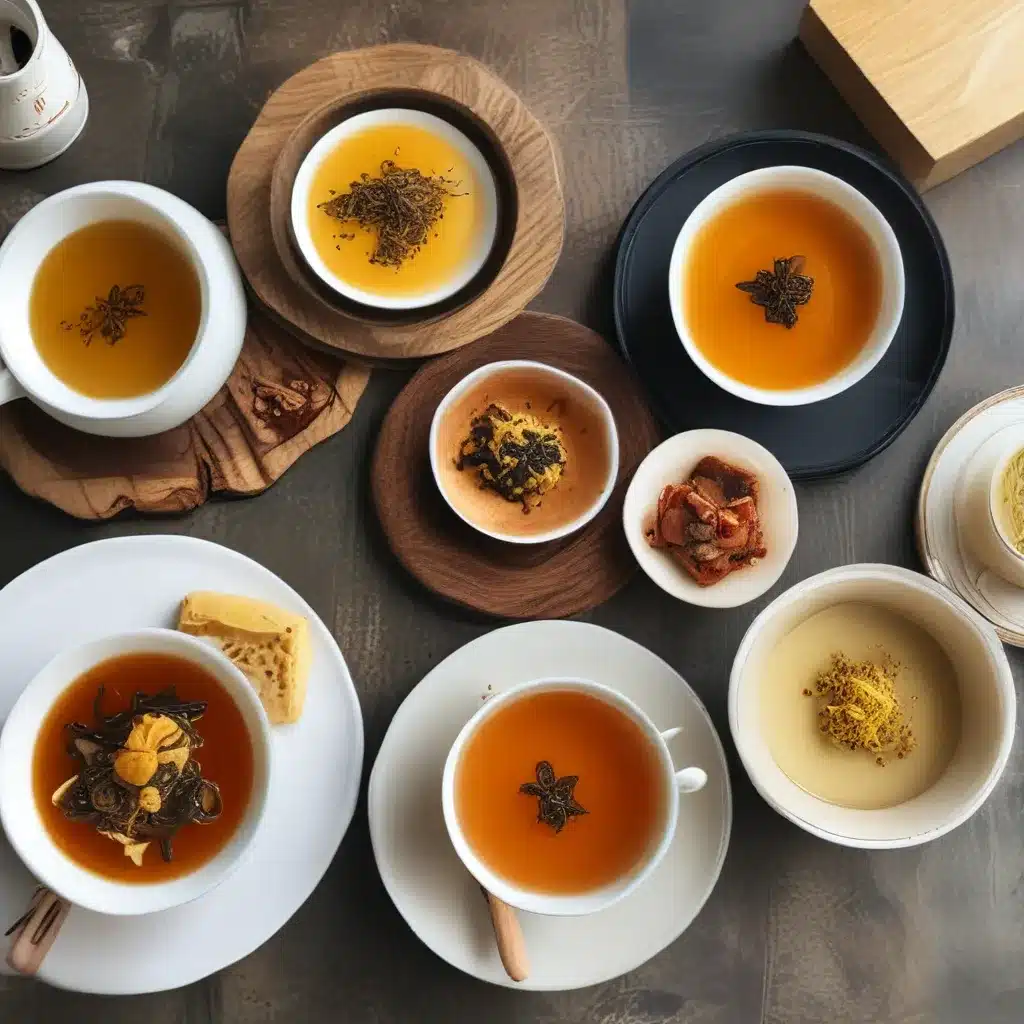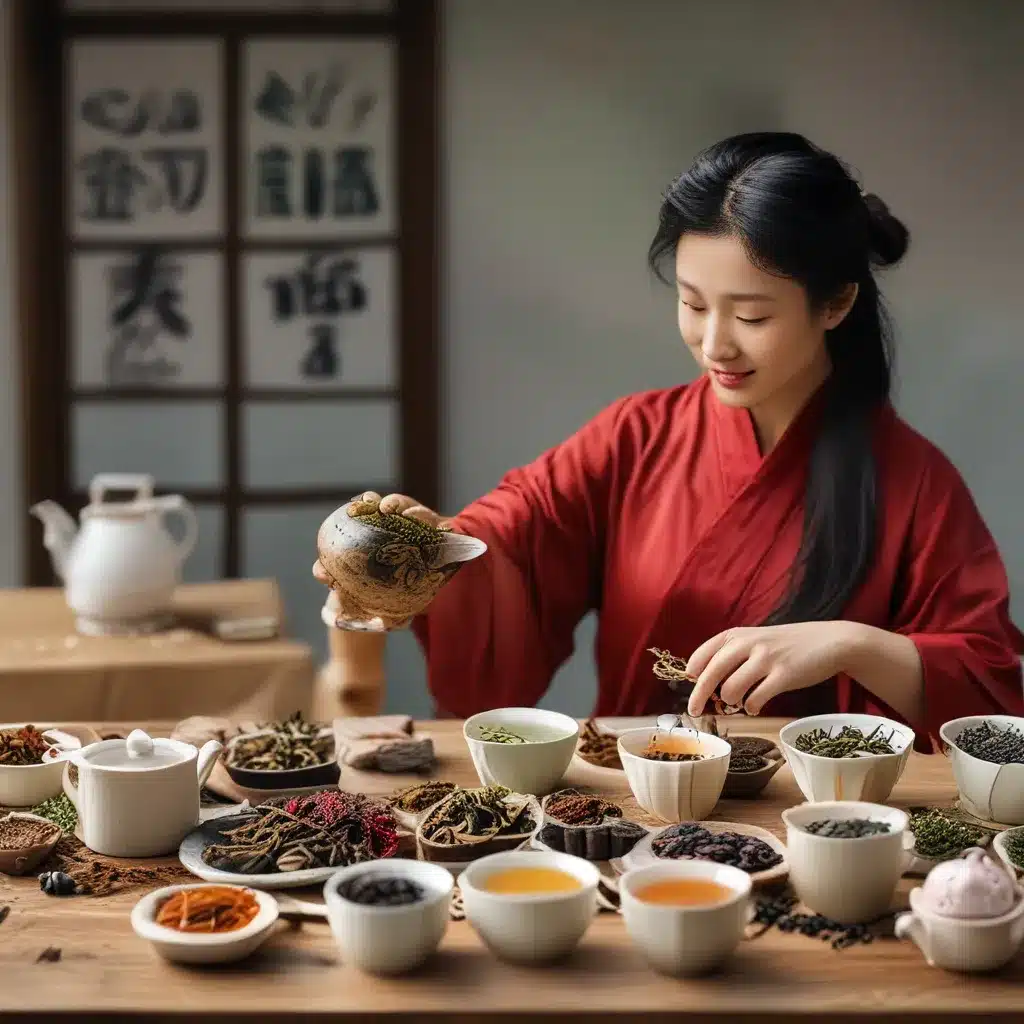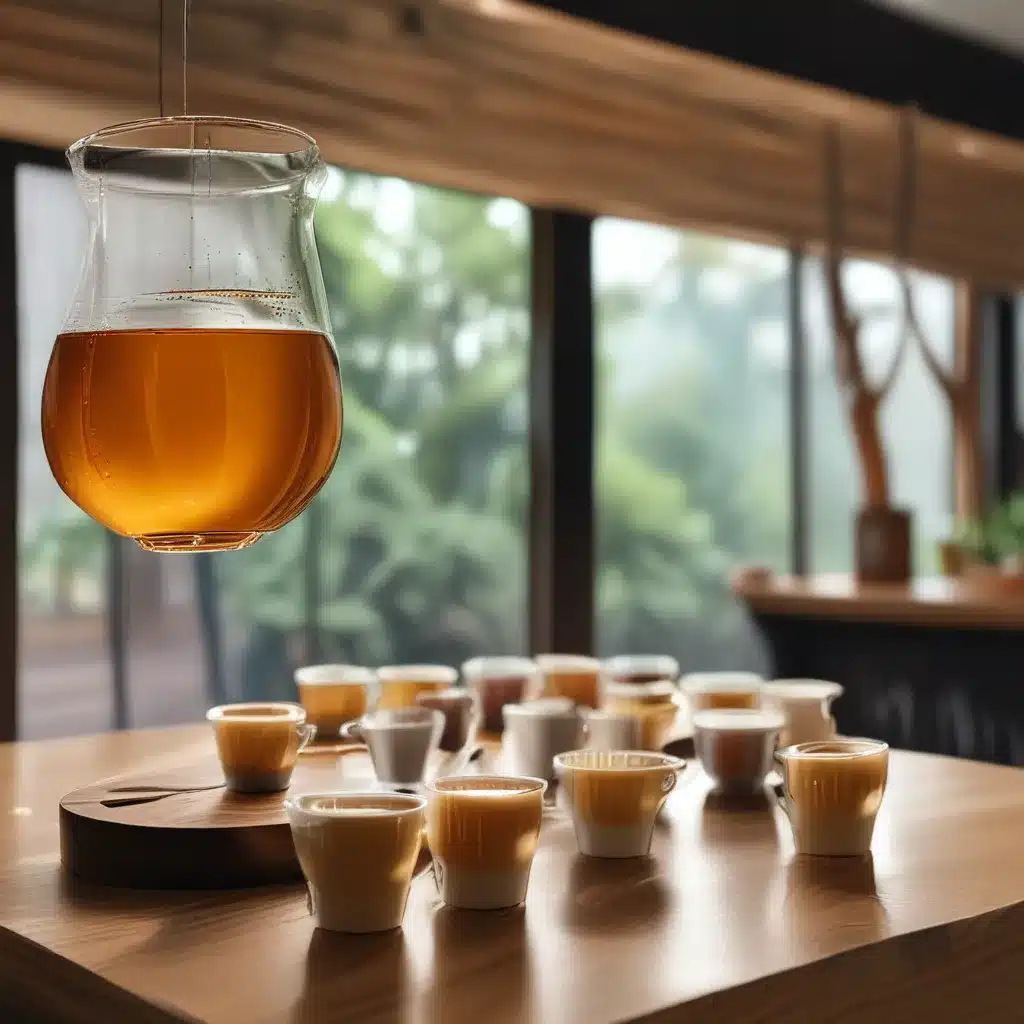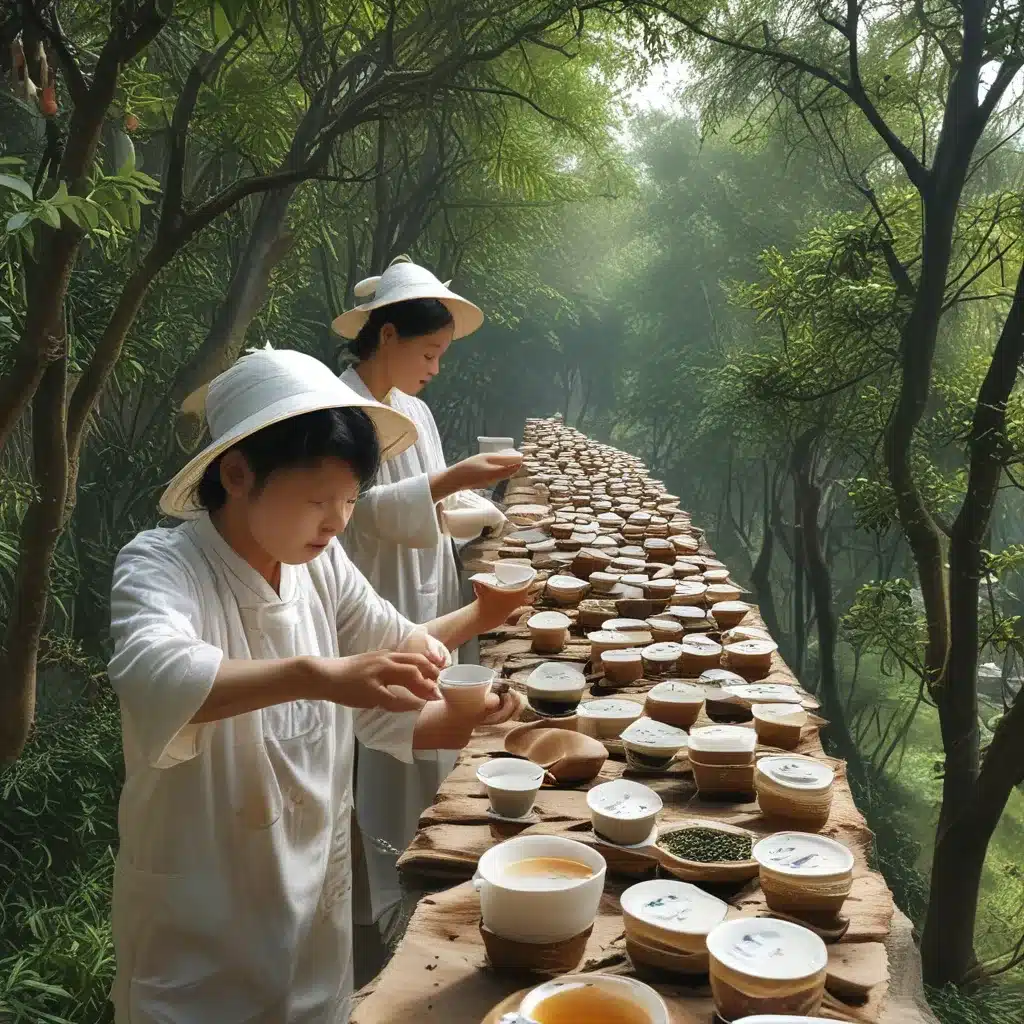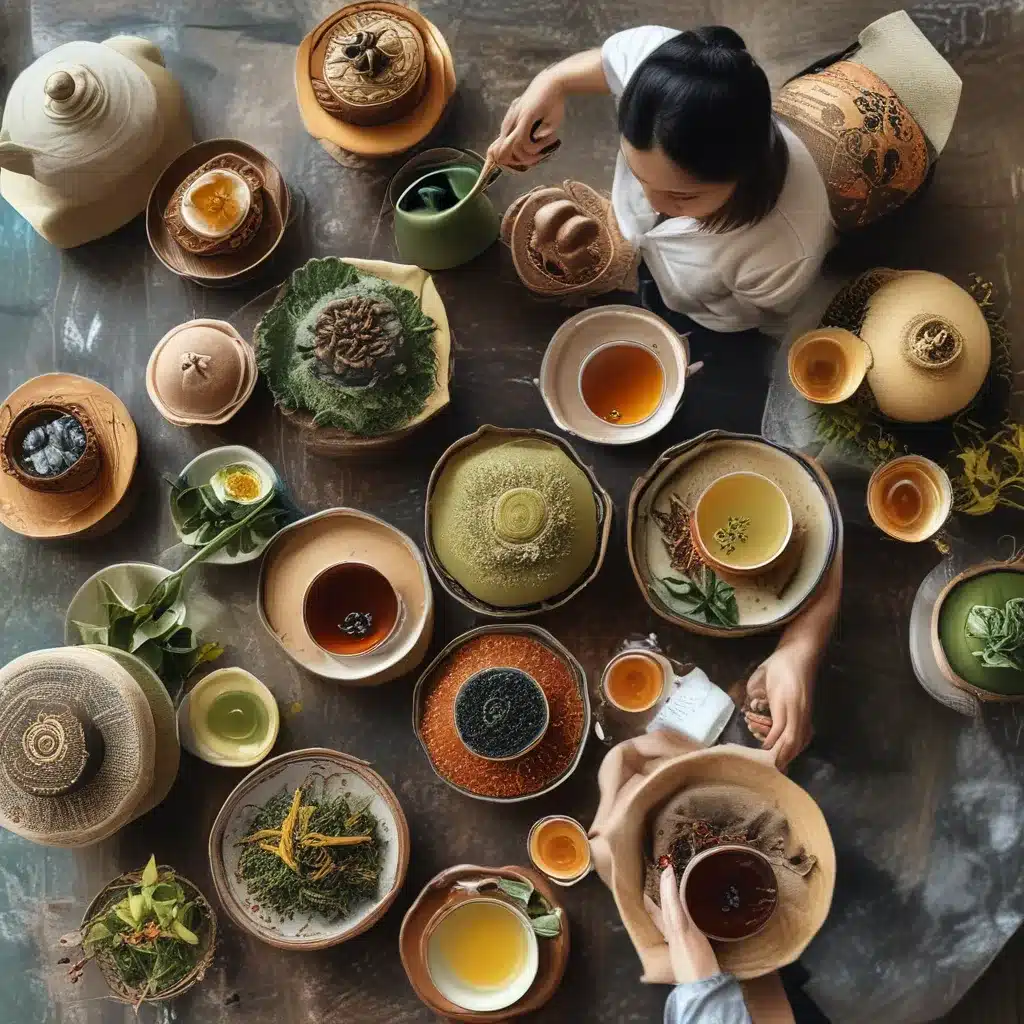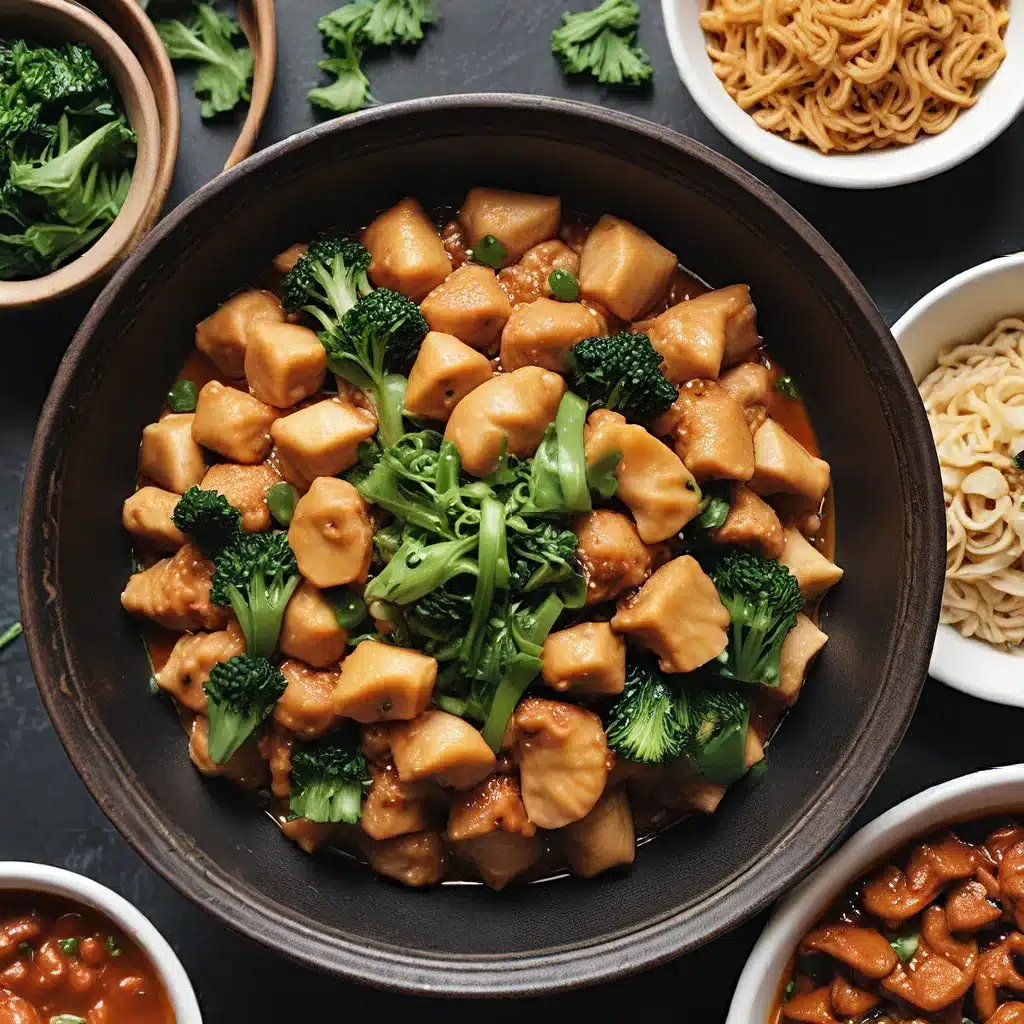
Uncovering the Nutritional Gems in Shanghai’s Culinary Landscape
As a proud Chinese-Canadian, I’ve always been fascinated by the rich tapestry of flavors and traditions that make up Shanghai cuisine. Growing up, I was lucky enough to have a dad who was a master of the wok, having honed his skills over 50 years of cooking in his own Guangzhou restaurant and recreating those flavors in our family kitchen.
From a young age, I developed a deep appreciation for the vibrant, umami-packed dishes that Shanghai is renowned for. But as I grew older and became more conscious of the importance of nutrition, I couldn’t help but wonder – how can we maximize the nutritional value of these beloved recipes without compromising the flavors we know and love?
Unleashing the Power of Mushrooms
One of the key ingredients that immediately comes to mind is the humble mushroom. As a child, I distinctly remember my dad’s braised mushrooms with bok choy – a dish that seemed to encapsulate the essence of Shanghai cuisine. According to the recipe on Made with Lau, his technique of searing the mushrooms to bring out their deep, earthy flavors was nothing short of magical.
What I didn’t fully understand back then was the incredible nutritional punch that mushrooms pack. These unassuming fungi are a veritable treasure trove of vitamins, minerals, and antioxidants. Packed with B vitamins, selenium, and the powerful antioxidant ergothioneine, mushrooms can help support a healthy immune system, cardiovascular function, and even cognitive health.
By incorporating a variety of mushrooms – from the humble button to the more exotic shiitake and king oyster – into our favorite Shanghai dishes, we can elevate the nutritional profile without sacrificing the bold, umami-forward flavors that define this cuisine. Just be sure to sear them properly to unlock their full flavor potential, as the team at Made with Lau so aptly demonstrates.
Embracing the Veggie-Forward Approach
Another key aspect of maximizing nutrition in Shanghai recipes is to adopt a more veggie-forward approach. As the team at Salt & Pepper Here points out, a classic Italian ragù can be transformed into a nutritional powerhouse by simply loading it up with an abundance of vegetables.
This principle can be easily applied to many beloved Shanghai dishes. Rather than relying heavily on meat, why not shift the balance and let the vibrant flavors of fresh produce take center stage? By incorporating a diverse array of vegetables like carrots, celery, zucchini, and onions, we can not only boost the vitamin, mineral, and fiber content of our meals, but also create a more well-rounded flavor profile that still pays homage to the rich traditions of Shanghai cuisine.
The beauty of this approach is that it allows us to enjoy the flavors we crave while also optimizing the nutritional value. And as an added bonus, it can be a great way to sneak in those “less-loved” veggies, as the team at Salt & Pepper Here discovered with their mushroom-packed ragù.
Striking the Perfect Balance with Acidity and Sweetness
One of the hallmarks of Shanghai cuisine is the careful balance of flavors, from the salty umami of soy sauce to the bright acidity of vinegar. But when it comes to maximizing nutrition, we need to pay special attention to how we manage these flavor profiles.
As the team at Salt & Pepper Here notes, many tomato-based sauces can be naturally quite tart, which can throw off the overall balance of a dish. To combat this, they recommend incorporating natural sweetness through the addition of carrots and a touch of honey or raw cane sugar.
This principle can be applied to a wide range of Shanghai recipes, from braised dishes to stir-fries. By carefully managing the acidity and sweetness, we can create dishes that not only satisfy our taste buds but also provide a more well-rounded nutritional profile. The key is to experiment and find the perfect balance that resonates with your personal preferences.
Embracing Alternative Proteins
While Shanghai cuisine is renowned for its use of pork, beef, and seafood, there’s a growing trend towards incorporating alternative protein sources that can enhance the nutritional value of our favorite dishes.
Take, for example, the humble mushroom. As we’ve already discussed, these versatile fungi can lend a delightful umami punch to our meals. But beyond that, they can also serve as a fantastic meat substitute, providing a satisfying texture and depth of flavor that can rival traditional proteins.
Similarly, lean poultry like chicken or turkey can be a great alternative to red meat, offering a leaner source of protein while still maintaining the heartiness that we crave in Shanghai-style dishes. By incorporating these alternative proteins, we can enjoy the flavors we love while also reducing our environmental impact and promoting better overall health.
Putting it All Together: A Nutritional Masterpiece
At the end of the day, the key to maximizing nutrition in your favorite Shanghai recipes lies in a holistic approach that celebrates the vibrant flavors and traditions of this celebrated cuisine. By embracing the power of mushrooms, prioritizing vegetables, striking the perfect balance of acidity and sweetness, and exploring alternative protein sources, we can create dishes that not only delight our taste buds but also nourish our bodies.
So the next time you’re craving the bold, umami-packed flavors of Shanghai, don’t be afraid to get a little creative in the kitchen. Experiment with different ingredient combinations, play with textures and flavors, and most importantly, have fun with the process. After all, as my dad always says, the true joy of cooking lies in the act of creating something delicious to share with the ones you love.
And who knows, you might just discover a new nutritional gem that takes your Shanghai cuisine to the next level. After all, One Dragon Restaurant is always here to inspire and guide you on your culinary journey.

